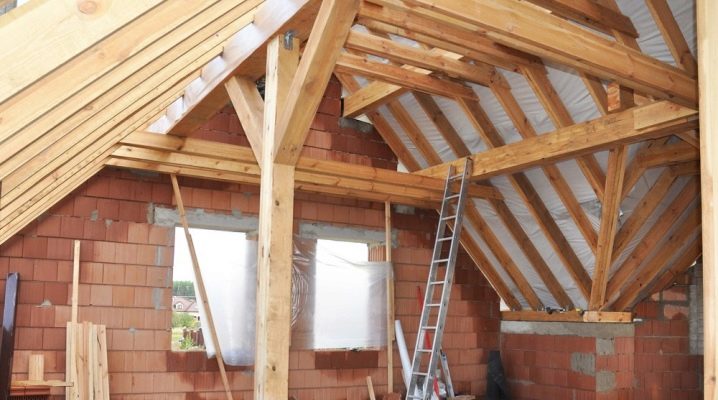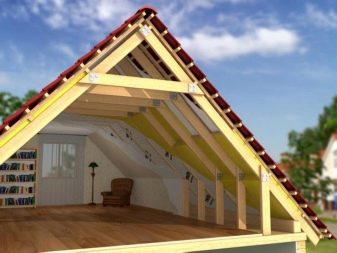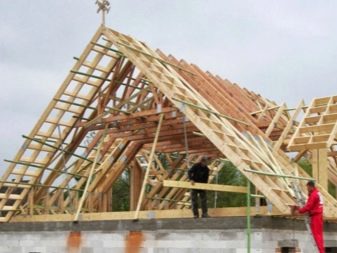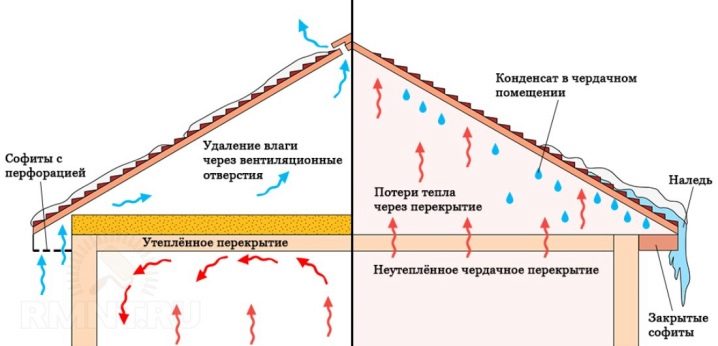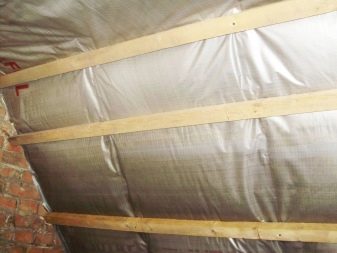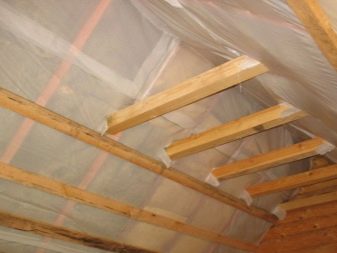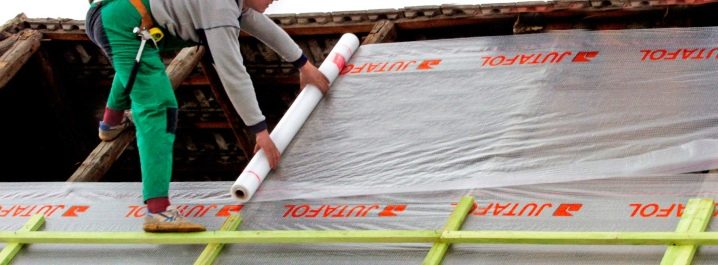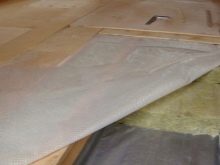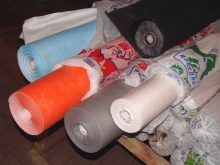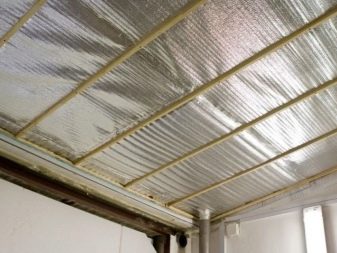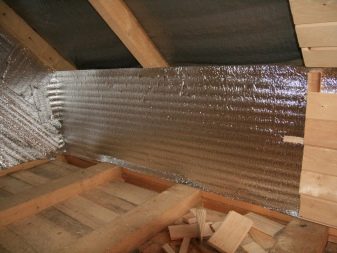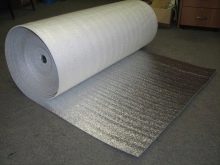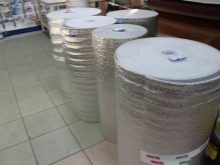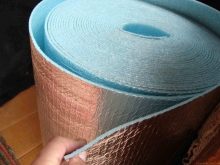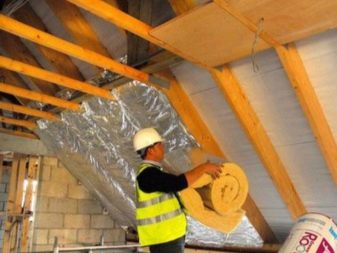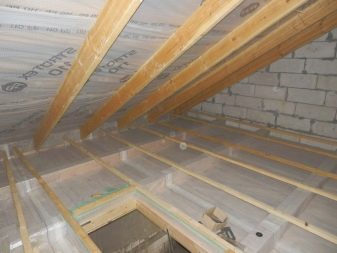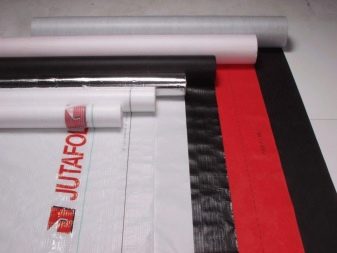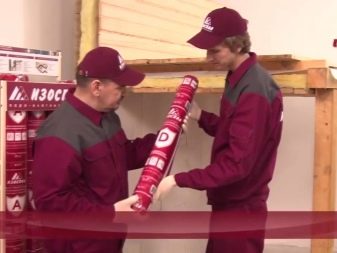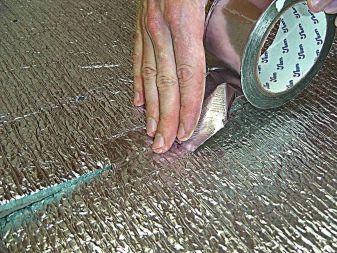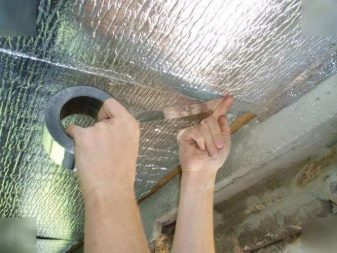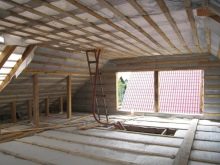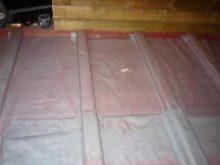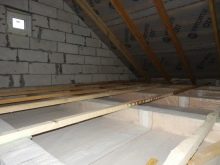Vapor barrier in a cold attic: types of materials and recommendations for use
Owners of private houses very often observe the formation of condensate on the ceiling. The reason for this is a cold attic. The simplest and most effective solution to this problem is the arrangement of the vapor barrier.
Special features
The construction of virtually any home involves the design of attic of various types. Simple attics are cold lofts that are not able to maintain the temperature at the same level.
Such a construction consists of several main parts:
- Roof covering. In most cases, there is no insulation, and only the finishing material is used to protect against rain.
- Exterior walls.
- Overlap.Warm attic can be supplemented with a layer of insulation.
What is it for?
Vapor barrier is a special material that is not able to pass moisture. These products are designed to protect insulation, as well as internal surfaces in the house from the possible penetration of moisture.
If this material is not used, a significant amount of water may condense on both sides of the ceiling. The liquid will penetrate into the pores of building materials, and lead to the formation of fungus, the destruction of the structure of the supporting beams on the roof of the cold attic, etc.
Indoors, high humidity adversely affects the finishing of walls, ceiling and floor.
Types and materials
Vapor barrier is the common name for various materials. Previously, as such products, people used oily clay, which was not able to pass moisture. Today, many different modifications of polymeric materials (“Izospan”, etc.) have appeared on the market, which are much easier to stack.
Film
This type of vapor barrier materials is the most common and popular.
This group includes the following types of products:
- Polyethylene film. Relatively inexpensive material that protects well against steam penetration. It can be used only at moderate temperatures, which will not lead to disruption of the structure. Another disadvantage of polyethylene can be considered a small strength. When laying such a film, you can easily tear it without even noticing minor damage.
- Polypropylene film. The material already transfers temperature drops much better than polyethylene-based products. It easily withstands ultraviolet, which increases its service life several times.
Today, manufacturers add to the films also viscose and cellulose. The resulting material is able to retain a significant amount of moisture. Experts recommend using this film only in places where there is ventilation, through which water can evaporate.
- Membranes. Appeared on the market relatively recently and have already received wide distribution. The material is able to pass moisture only in one direction. Therefore, when laying it is important to consider the location of the layer relative to the pores.
Foil
Roll vapor barrier is not intended for use at high temperatures. It is used mainly in the construction of private houses. But if you decide to isolate the ceiling of the bath, then you should use foil products. Outwardly, they resemble films, but at the same time one of the sides is covered with a thin layer of foil. Such a structure allows not only to detain steam, but also to qualitatively reflect thermal radiation.
Depending on the structure, foil films can be divided into the following types:
- Foil on kraft paper. One of the cheapest products. Although the material is easy to fit, but over time it is damaged by a fungus. Another disadvantage is its hygroscopicity.
- Lavsan compositions on craft paper. Manufacturers claim that the substance is able to withstand temperatures up to +140 degrees. But many users claim that in reality these materials behave badly in such conditions. Moreover, such coatings are easily damaged by any chemical mixtures. Therefore, in the bath is not desirable to use detergents and other aggressive compositions.
- Foil applied on fiberglass. The highest quality vapor barrier, characterized by high strength and high-quality insulating performance. The only disadvantage is the high price, which is far from being available to everyone.
Which one to choose?
Vapor barrier is often used only with insulation (glass wool, etc.).
When choosing such a product should consider several factors:
- Environment of use. If it is an ordinary residential building, then the best option would be membranes or polypropylene reinforced film. They are well pass steam in only one direction. For the insulation of the ceiling in the bath you need to use only foil materials.
- Manufacturer. The most popular brands of vapor barrier for roofing are "Izospan" and "Yutafol NAL". Here you can find both film and foil products that meet all standards.
- Styling technology. Sometimes it is difficult to vaporize the attic floor, as materials will be subjected to severe stresses. For such purposes it is better to use durable membranes.
Tips and tricks
The quality of ceiling protection depends on the approach to the installation of vapor barrier materials.
In order to exclude any damages and possible shortcomings, one should follow a few simple rules:
- Polyethylene or polypropylene film is desirable to mount only with staples or small nails. Experts recommend laying a thin wooden plank under fasteners. It will not only reduce the risk of damage to the material, but it will also press it to the frame better.
- Regardless of the vapor barrier used, all elements must be docked with an overlap of at least 15 cm. The joints must be glued together with a wide tape, which can be found in a specialized store. If a vapor barrier based on foil is used, then it must be fastened with foil tape.
- It is undesirable to stretch the film when laying. It must be free so that when heated or cooled it has space for stretching or compression. This will eliminate the formation of cracks or tears.
- If the film is spread on protruding wooden beams, then it is desirable that it be as accurate as possible. To do this, in the corners it must be fixed with additional fasteners.
Vapor barrier is a unique opportunity to protect the insulation from moisture, which, in turn, will make the home warm and comfortable.
About vapor barrier ceiling, see the video below.
